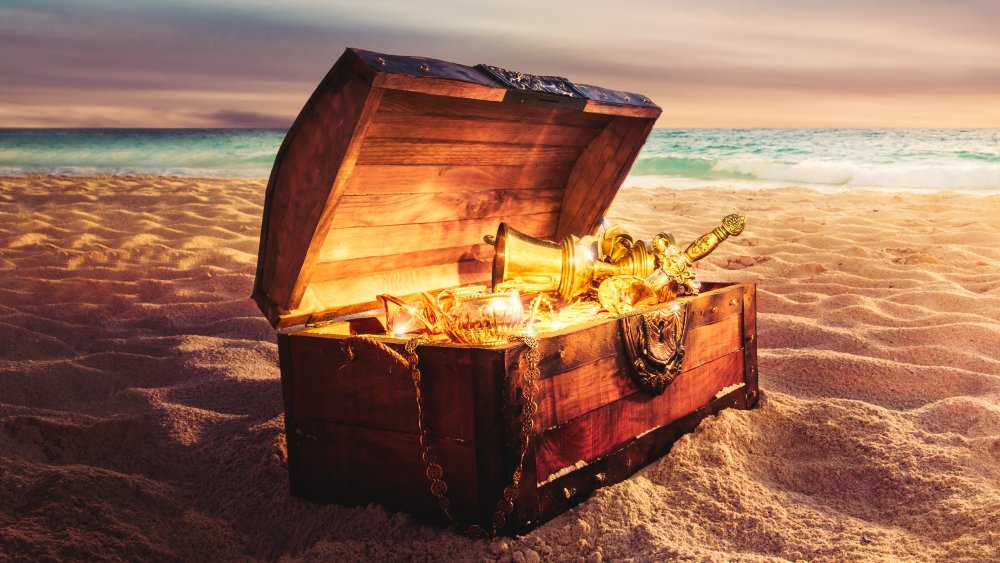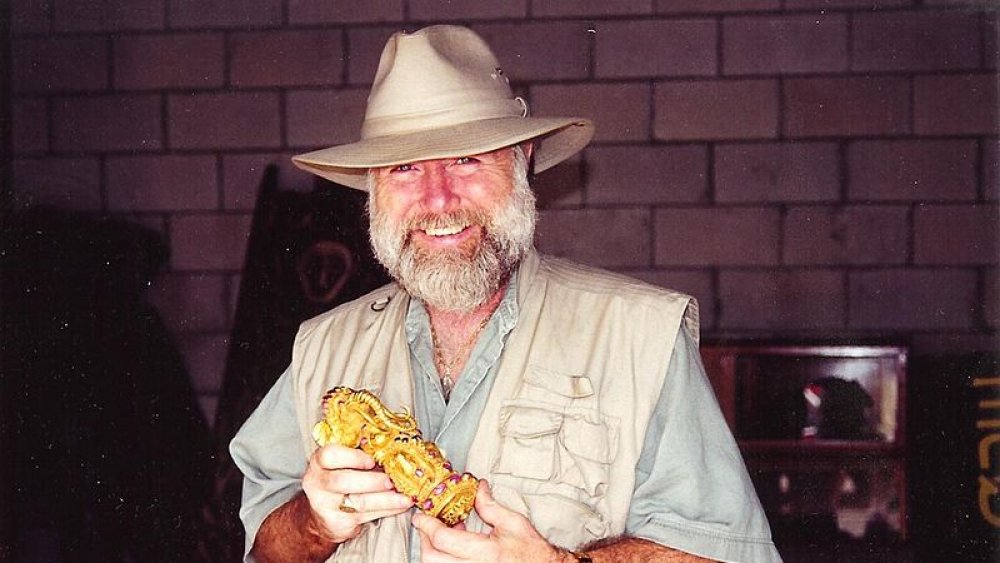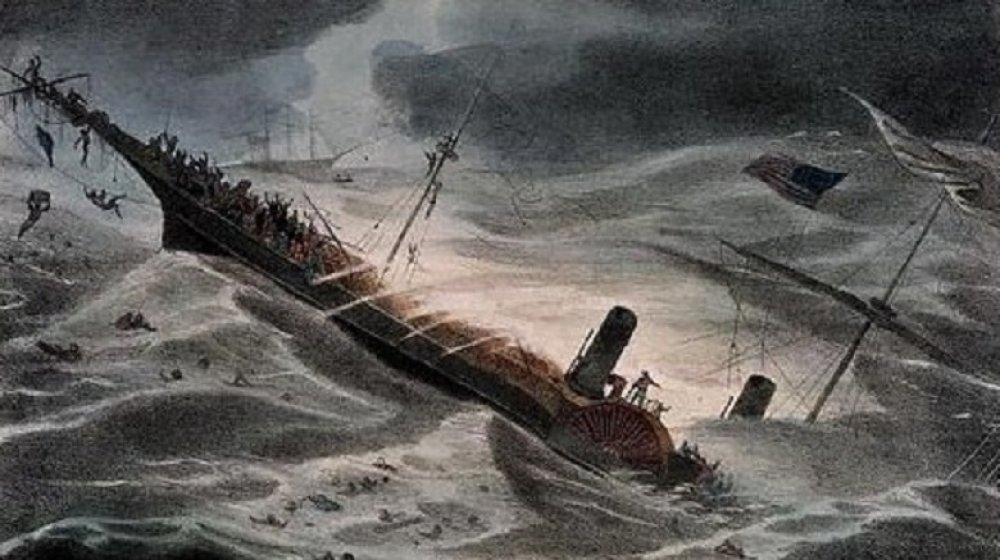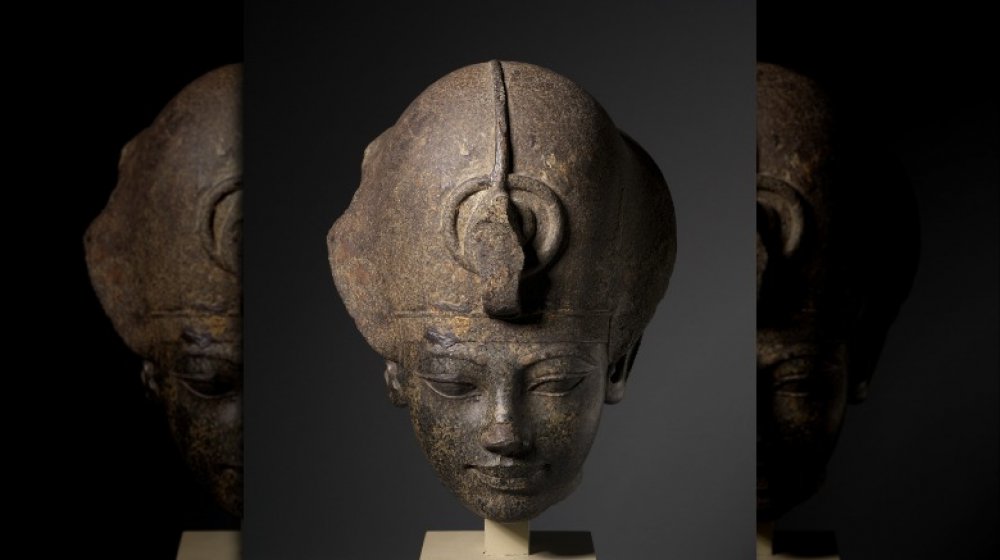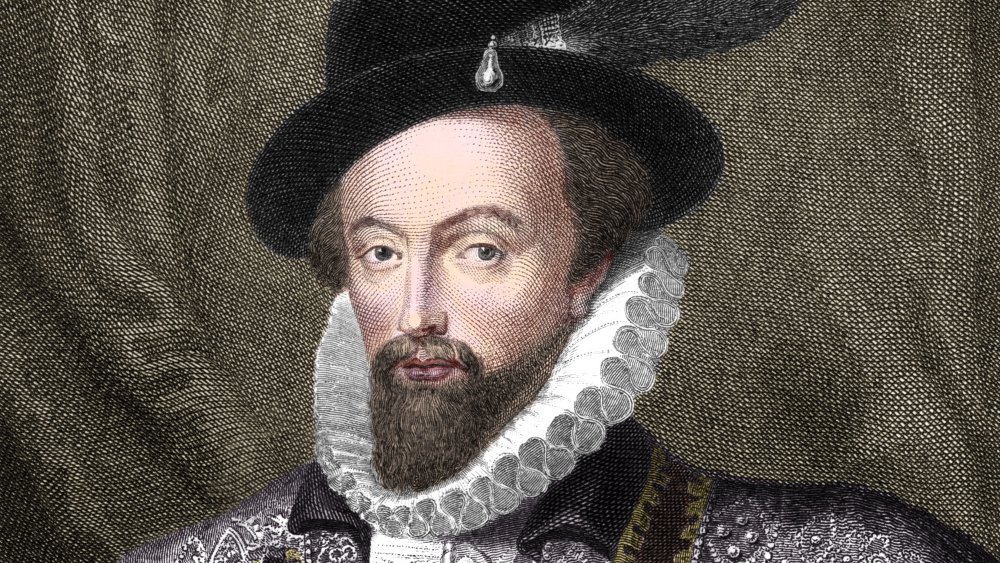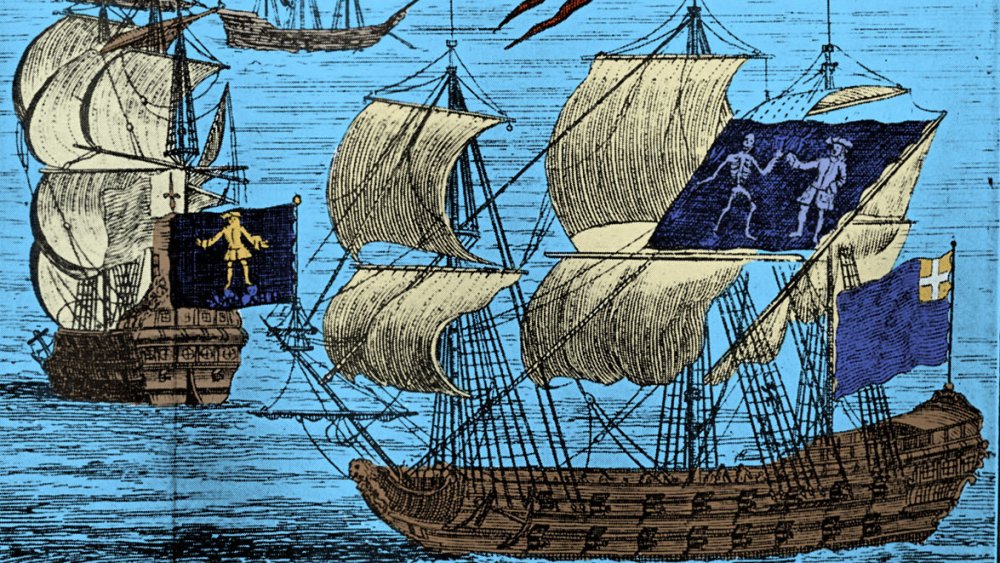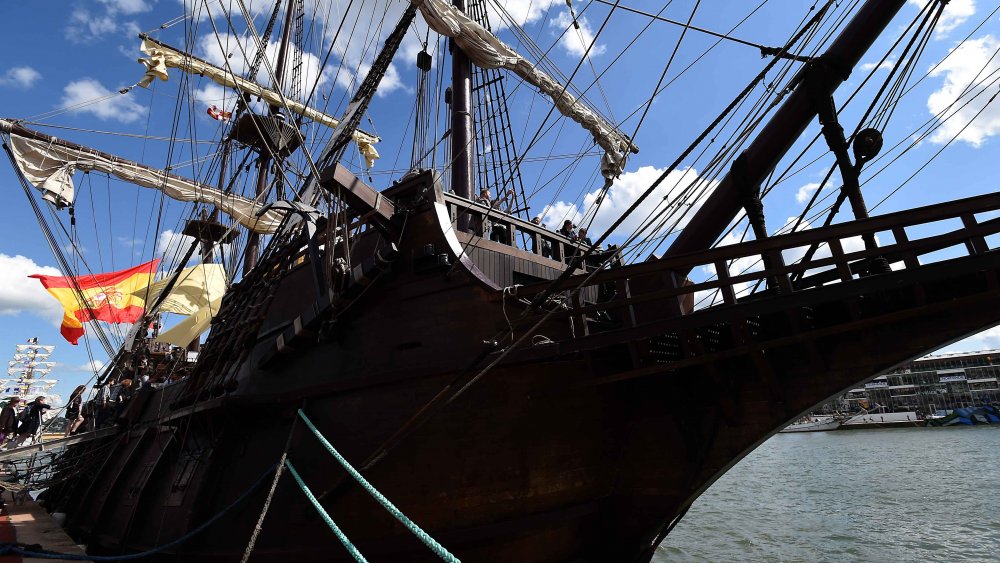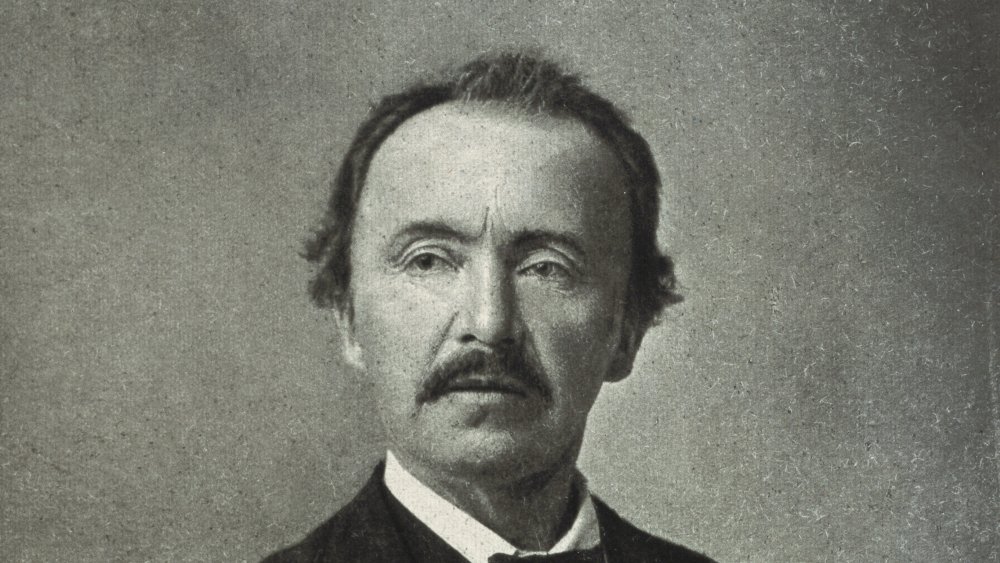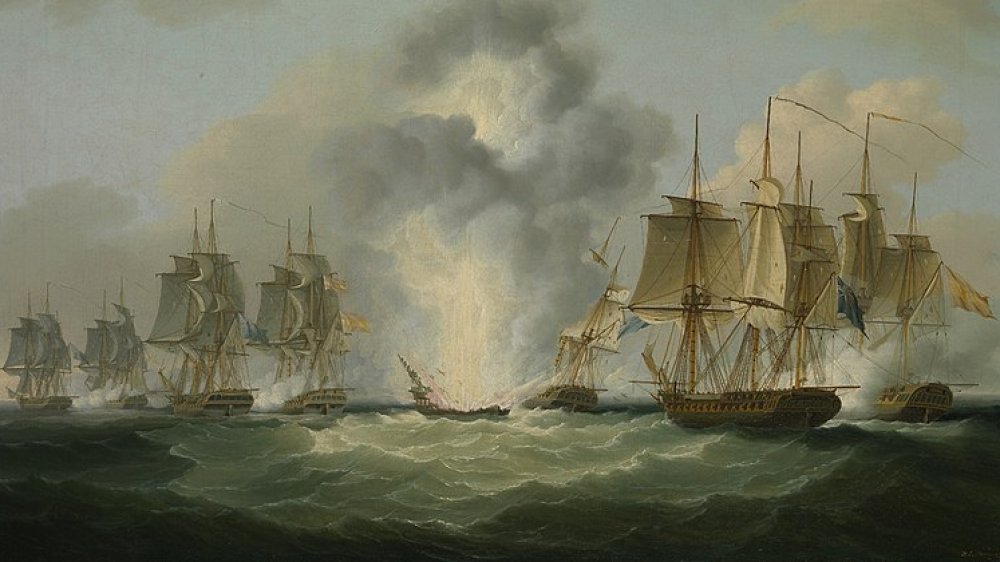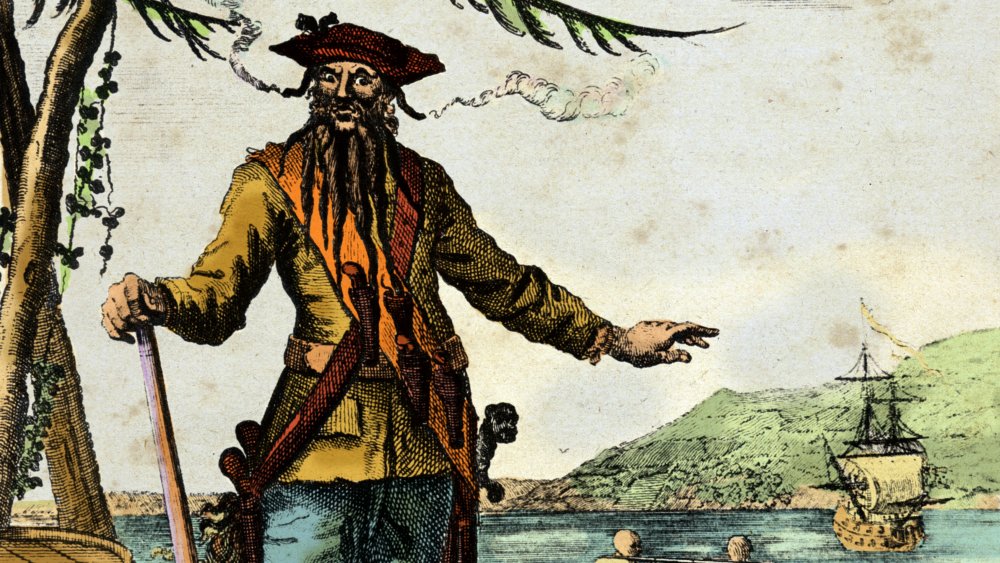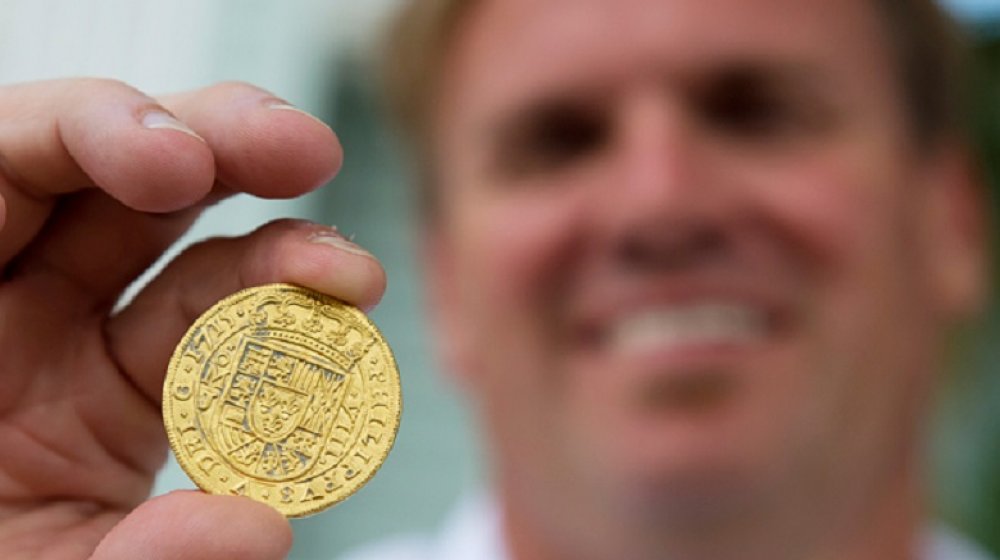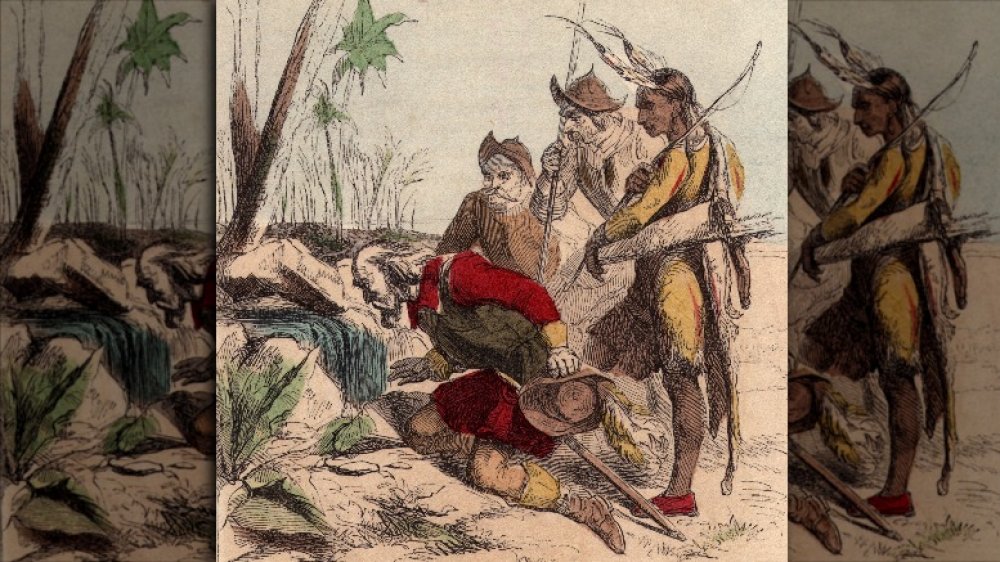The Most Notable Treasure Hunters In History
Treasure hunters have inspired books and movies throughout history. Who wouldn't want to strike it rich by finding a pirate's buried treasure or taste immortality from the Fountain of Youth or the Holy Grail? The adventures alone are enough to drive some people to the far corners of the Earth, while others are drawn to the bottom of the deep blue sea to scout the wreckage of old ships. Though, most of us would rather walk the beach with a metal detector than risk our lives for a treasure we're not likely to find.
Treasure hunting is more than a hobby. It's a passion. A very expensive passion. Between the lawyer and application fees that help ensure you'll actually be able to keep whatever treasure you find, equipment costs, and the travel costs, most of us would drain our life savings to come back home with squat. But that's the thing: most treasure hunters aren't "treasure finders."
The people to make the list had luck (and usually a wealthy investor or two) on their side, but that doesn't make their quests or their discoveries any less notable.
E. Lee Spence has been injured in the search for treasure
Treasure hunting can be a dangerous game, as Dr. E. Lee Spence has discovered during his 60-year career as a treasure hunter. In a life that sounds more like an adventure novel than a legitimate field of work, Spence has been stabbed twice and shot once. That's the price you pay for being a world-renowned treasure hunter and a pioneer in the field of underwater archaeology.
His first discovery came early. At 12-years-old, Spence found five different shipwrecks and several old coins. This was after he designed his own scuba gear, of course. From then on, Spence was addicted to the thrill of treasure hunting. He'd hire his friends to help salvage wrecked ships when he was only a teenager, spreading the addiction to those closest to him. According to Spence (via Vice), he's found over $100 million worth of artifacts and has a trove of adventure stories that make his life unbelievably exciting.
Among Spence's legacy of findings is the discovery of the H.L. Hunley in the 1970s. The Hunley is the first submarine in history to sink an enemy ship, and it had been lost since 1874. Yes, submarines are that old. Even though Spence discovered this piece of history, he wasn't the one to dig it up. A legal battle would ensue in the 90s and Spence would lose his claim to the ship due to statute of limitations.
Giovanni Battista Belzoni plundered Ancient Egyptian treasures
Giovanni Battista Belzoni was an Italian explorer, treasure hunter, and pioneer in the field of Egyptian archaeology. For clarification: Modern archaeologists cringe when they hear "treasure hunter" and "archaeologist" referring to the same person, but that's the way it used to be. You searched for treasure and studied along the way. Belzoni was both.
Belzoni began excavating Egyptian tombs in 1817 and, according to Britannica, the way he went about it was more pillaging than excavating. He'd rifle through temples and tombs alike looking for what was most valuable while disregarding everything else. He took a giant sculpture of Ramses II's head and brought it to the British Museum. He stole the sarcophagus of Seti I and brought it back to England as well. He "excavated" Elephantine, the temple of Ramses II, and the temple of Edfu, making off with their treasures as well.
Belzoni's most notable endeavor was being the first person to make it inside the pyramid of Khafre at Giza. That's the second biggest of the Giza pyramids. Those are some pretty cool feats if you can look past all the thievery.
Tommy Gregory Thompson is pretty sketchy
The SS Central America was a large steamship that operated between coasts during the California Gold Rush of the mid-1800s. The ship wasn't unique. There were hundreds like it doing the exact same thing. Gold and other items had to be shipped from one side of the country to the other as miners and prospectors flocked to the West.
The SS Central America was commissioned for one of the largest shipments of the century. The banks in New York were running dry on the one item that backed the currency at the time and California was digging it up. On the voyage from San Francisco to New York, the ship collided with a hurricane. Naturally, the steamship didn't survive, nor did most of the passengers. The SS Central America is famous because of the wealth it took with it when it sank in September 1857. The missing gold set off a chain of events that threw the world into a financial panic.
The ship would lay at the bottom of the Atlantic until discovered by a salvage group headed by Tommy Gregory Thompson in 1988. Within the wreckage was over $100 million worth of gold. Thompson, in true treasure hunter fashion, sold off a bunch of gold without giving his crew or investors their cut, then went into hiding in 2000, according to the Seattle Times. He was captured in 2015 but refuses to admit where he's hidden 500 gold coins from the salvage.
Jonathan Tokeley-Parry became a smuggler
Not all treasure hunters go about their jobs legally. There's a lot of red tape involved that makes hunting treasure much easier if you skirt the legality. It's also more profitable to sell your treasures on the black market. If the prospective treasure in question has previously been claimed by insurance companies, governments, or descendants, it's possible for the treasure hunter to spend more money recovering it than he'd make off it. The reward for pawning treasures off via an illegal route can be pretty high. It can also be incredibly risky and down-right immoral.
Jonathan Tokeley-Parry was one those "skirt the law"-type treasure hunters. The man was arrested in 1997 for and convicted of smuggling over 3,000 artifacts out of Egypt. That number is what he was convicted for. Who knows how many he actually smuggled.
Tokeley-Parry decided to make the leap to treasure hunter/smuggler from a career restoring antiquities, and he was known to be one of the best, according to Newsweek. This job gave him the necessary skills to conduct his illegal operation. He was a specialist. The artifacts crossed borders effortlessly looking like run of the mill reproductions. His method involved dipping the stolen artifacts in liquid plastic and dolling them up to look like knockoffs. One of his biggest scores was the head of Pharaoh Amenhotep III, which was valued at over $1 million.
Sir Walter Raleigh was searching for a place that didn't exist
Another to add to the list of "notable but failed treasure hunters" is Sir Walter Raleigh. Raleigh was in search of the golden city of El Dorado. He wasn't the first, nor the last, but his story is worth telling. There's a moral in it somewhere.
The 16th and 17th centuries gave birth to the idea in the minds of Europeans that a city flooded with gold was somewhere across the great pond. Europeans, hungry for other countries' resources as they've often been, sent men to travel across the ocean in hopes that they may return with these riches. A lot of these men died and the ones who did make it home were usually empty-handed. Eventually, a lake was discovered near South America's northern coast where they found a decent amount of gold pieces and local tribes gave hopes to the El Dorado myth.
National Geographic says Sir Walter Raleigh conducted two expeditions in Guiana in search of the fabled city and its riches. Neither trip turned up squat. Raleigh was too old on the second trip to go trouncing around the terrain himself, so he sent his son out while he hung back at camp. His son, Watt Raleigh, was killed in a skirmish with the Spanish. The survivor who broke the news to Raleigh killed himself in the ship's cabin. Everything was going to hell, so Raleigh went back to England only to be beheaded on King James' orders for clashing with the Spanish.
Barry Clifford is good at finding shipwrecks
As far as famous American treasure hunters go, Barry Clifford is at the top of the ladder. He's also one of the best sports in the business. There are two types of treasure hunters. One is looking to get rich while the other is out for adventure and discovery. Clifford is the latter, though he's done a bit of the former along the way.
He started his own aquatic salvage company in the 70s and spent the next decade doing any type of work he could get below the water's surface. He managed to find several wrecked ships in that time, but none were his major bounty. That came in 1984, when Clifford and his crew tracked down the remains of the Whydah, an 18th century, honest-to-goodness pirate ship.
According to the San Diego Natural History Museum, the Whydah was the first authentic pirate ship to be discovered in American waters, and it was full of artifacts. So far, the crew has pulled over 100,000 items from the wreckage and kept them under state and federal oversight. The excavation has expanded academic knowledge regarding pirates from the 18th century. Clifford has a penchant for discovering pirate ships. It's his thing. Off the coast of Madagascar, he's found William Kidd's Adventure Galley and William "Billy One-Hand" Condon's Fiery Dragon. Of three others his crew found in the area, one is believed to be Dirk Chiver's New Soldado.
Mel Fisher found silly amounts of gold
Mel Fisher is truly the type of explorer-treasure hunter that people romanticize when they think of the title. He came from humble beginnings as a chicken farmer and took up hunting for sunken treasure purely to sate his love for adventure. He wasn't in it for the money. Which isn't to say he didn't find quite a lot of the stuff. During his career, pillaging (legally) the wreckage of Spanish off the Florida coast, he found not thousands but hundreds of thousands of gold and silver coins. He found pounds of centuries-old jewelry and gold bars. He found a trove of artifacts, but he never found the one thing he was looking for: Nuestra Señora de Atocha.
The Nuestra Señora de Atocha sank around the Florida Keys in 1622. Like many of the shipwrecks at the time, they didn't have advanced weather conditions and their eyes couldn't spot a hurricane until it was nearly upon them. The Atocha stayed hidden on the bottom of the Atlantic until Mel Fisher's son, Kane, discovered the ship in 1985. The score made the family millionaires even with 700 investors to pay.
Mel Fisher's company found another galleon ship 100 miles away. The company as a whole made up a majority of Florida's salvage business, but they made some of their money in less-legal ways. According to the New York Times, Fisher admitted to selling counterfeit gold coins in the company gift shop for $2,500 to $10,000.
Heinrich Schliemann had no idea what he was doing
Heinrich Schliemann is often credited for being one of the founders of archaeology and, more specifically, ancient Greek archaeology. Schliemann was a German-born United States citizen who grew up with a passion for ancient Greek stories. He became an archaeologist later in life and through his career, he'd discover the ancient city of Troy as well as the graves of Agamemnon, Clytemnestra, and Mycenae.
To be fair, Schliemann wasn't the only person to discover Troy, but he did a lot of the digging. He did not do it well. As far as archaeologists are concerned today, Schliemann was pretty much a hack who didn't care much about the history he was unearthing and cared wildly about boosting his reputation. According to the Journal of Field Archaeology, most of Schliemann's accomplishments were embellishments or lies. Another thing agreed upon in the modern era: Schliemann was more of a treasure hunter than an archaeologist.
An archaeologist's life isn't the most economically fulfilling career path. Schliemann had to feed himself somehow, and he chose to sell artifacts to do it. Some of the treasure he smuggled out over his career, according to Britannica, included the mythical Priam's Treasure from the dig site at Troy and enough gold that the Ottoman government had to force him to share.
Spain took Greg Stemm to court over treasure
Gregory Stemm is a co-founder of Odyssey Marine whose business is to salvage ships. He's also written a bunch of books about salvage and artifacts. He's pretty into the idea of treasure hunting and, some would argue, he's pretty good at it. With Stemm leading the charge, Odyssey Marine made one of the biggest scores in history.
The Nuestra Señora de las Mercedes was cruising along full of goodies from Uruguay and expecting to land in Spain. The day was October 5, 1804. At the time, England and Spain were at peace, so it came as a shock when the ship was ordered to dock in England for inspection. The captain was a little peeved and refused to comply. The British probably weren't trying to sink the Nuestra Señora de las Mercedes when they fired their solitary shot, but it struck the ship's store of ammunition and everything blew up. Well, the Nuestra Señora did anyhow.
The wreckage was discovered by Stemm's crew in 2007, who pulled it up along with 17 tons of gold worth around $600 million. There was just one problem: Spain claimed the wreckage as theirs. Stemm's company ignore the Spanish request until it came to bite them in the behind in court, where it was ruled that Spain was to be paid for the stolen salvage, according to the Tampa Bay Times.
Philip Masters didn't get Blackbeard's treasure
There wasn't a pirate in all of history as famous as Blackbeard. Maybe Captain Jack Sparrow, but it's a close one. Blackbeard sailed the majestic Queen Anne's Revenge and terrorized the seas in a two-year campaign during the early 18th century. He captured as many as 20 English vessels and filled his ship with booty. The Queen Anne's Revenge was a French slave ship captured by Blackbeard. The ship was hefty, carrying 40 canons and 300 crew, and it disappeared the same year Blackbeard was killed, 1718.
As far as anyone was concerned, the ship disappeared without a trace, but she didn't. The Queen Anne's Revenge left a trail of breadcrumbs. Canon breadcrumbs. In 1996, the day before the anniversary of Blackbeard's demise, People reports Philip Masters and his crew found a handful of cannons in 20 feet of water off the coast of South Carolina. Then another handful. By the time they'd found 15 cannons, they knew which ship it had to be. Most ships didn't carry that many and fewer of them sunk in that region.
Masters had been searching for that exact ship for 10 years. The treasure of Blackbeard found at last! Except it wasn't. There was no treasure in the wreckage. Blackbeard had foiled the world once more. Which means, his treasure is still out there somewhere.
Brent Brisben got a nice anniversary present
In 1715, a fleet of 11 Spanish ships was sailing from Havana on their way back to the motherland. Unfortunately for the fleet, they crossed paths with a hurricane and ended up on the ocean floor near Florida. Fortunately for Brent Brisben, they were all carrying treasure.
Brent Brisben is the owner of the salvage company Queens Jewels, which owns the right to all 11 vessels of the 1715 fleet. In 2015, on the 300th anniversary of the wreck to the day, Queens Jewels found 350 gold coins in the wreckage. It doesn't sound like much, but those 350 coins are worth $4.5 million, and they found all of them in only six feet of water. Nine of the coins were Royals, which hadn't been found in almost 20 years. Brisben described the finding as "something magical," most likely because of the timing, but the money is pretty magical as well.
Because Brisben's team owns rights to the wreckage, anybody who finds treasure from the 1715 fleet in the water has to relinquish it to Queens Jewels, but Brisben says the beach is fair game. And, there's still $400 million waiting to be found.
Ponce de León wasn't looking for the Fountain of Youth
The Fountain of Youth has been a highly sought mythic artifact for hundreds of years. Chances are a fountain whose waters grant eternal youth to those who consume it or take a dip in it is nothing more than a fable, but that hasn't stopped people from searching for it. Most who have looked for this elusive magic have returned from their quests empty-handed. One explorer, though, came back with a peninsula now known for the wackiest headlines in the United States.
Juan Ponce de León was a 16th-century Spanish explorer whose name will forever be connected with the Fountain of Youth thanks to a tradition among centuries-old Spanish historians. Ponce de León set out for the island of Bimini, which was uncharted at the time but is now part of the Bahamas. Long story short: Ponce de León, like Christopher Columbus, missed. He, instead, landed in Florida.
Historians at the time claimed he was on a quest to find the mysterious fountain and live forever, a story that would become a legend that lasted up until recent times. According to Smithsonian Magazine, it's more likely that Ponce de León was searching for the island of Bimini to take up the position of governor in a new colony after losing his governorship of Puerto Rico in 1511. St. Augustine, FL, has latched on to the legend with a spring that draws in tourists claiming to be the famed waters discovered by Ponce de León.
